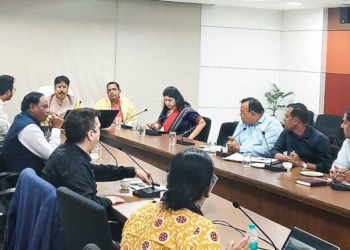Bhubaneswar: Sudasa Brata — a unique and sacred observance of Odisha — is celebrated by married women with deep devotion and faith. This important ritual is dedicated to Goddess Lakshmi, symbolizing purity, discipline, and maternal love.
The festival falls on the Dasami tithi (10th lunar day) of Shukla Paksha (the waxing moon phase) particularly when it coincides with a Thursday.
The term ‘Sudasa’ itself carries symbolic meaning; ‘Su’ denotes purity, while “Dasa” signifies the number ten. This number is central to the puja, reflected in ten types of offerings, ten knots tied in the sacred thread, ten mantras, and ten rounds circled around the tulsi plant or altar.
Ritual Observance
Women begin the day before sunrise with a ritual bath, preparing themselves for the puja with utmost care. A yellow thread (brata guna) is tied around their wrists with ten knots—each knot representing a special prayer or wish. Goddess Lakshmi is worshipped with an array of offerings including fruits, sweets, flowers, turmeric, and lit diyas, all arranged in sets of ten.
Fasting is an integral part of Sudasa Brata, with many women observing a nirjala fast (without water) until the evening puja concludes. The day ends with the recitation of the Sudasa Brata Katha — a spiritual tale that celebrates unwavering faith and the protective blessings of the goddess.
Cultural Significance
Sudasa Brata is more than a religious observance; it is a testament to the spiritual strength and cultural values upheld by Odia women. The festival underscores lessons of patience, dedication, and faith, emphasizing their role as pillars of family and tradition.
Purpose of Celebration
The festival is observed primarily to seek:
- Longevity and success of the husband
- Health, education, and well-being of children
- Peace, prosperity, and harmony within the home
As Odisha continues to cherish its ancient rituals, Sudasa Brata stands as a vibrant symbol of the state’s rich spiritual heritage and the enduring strength of its women.
















